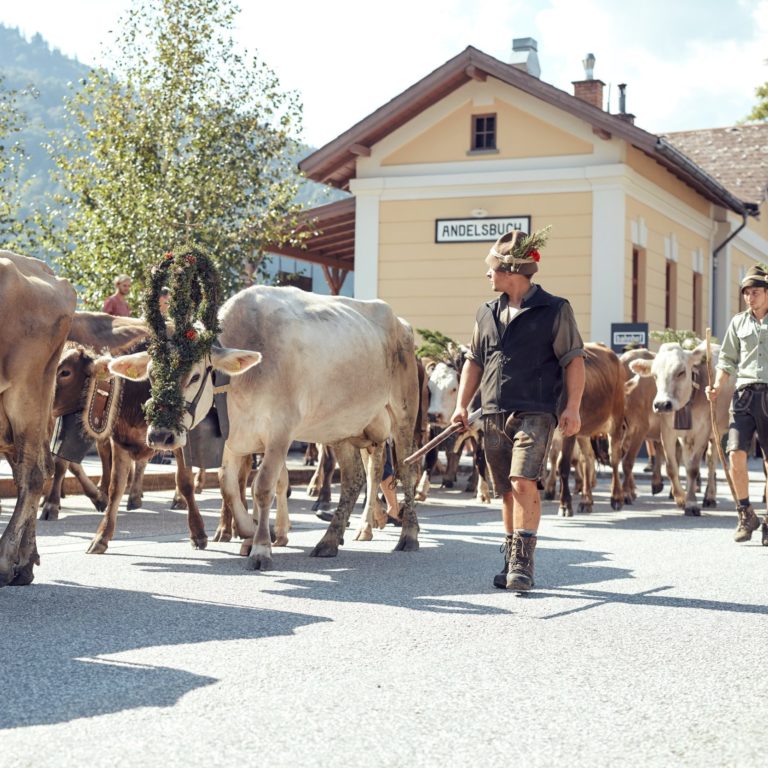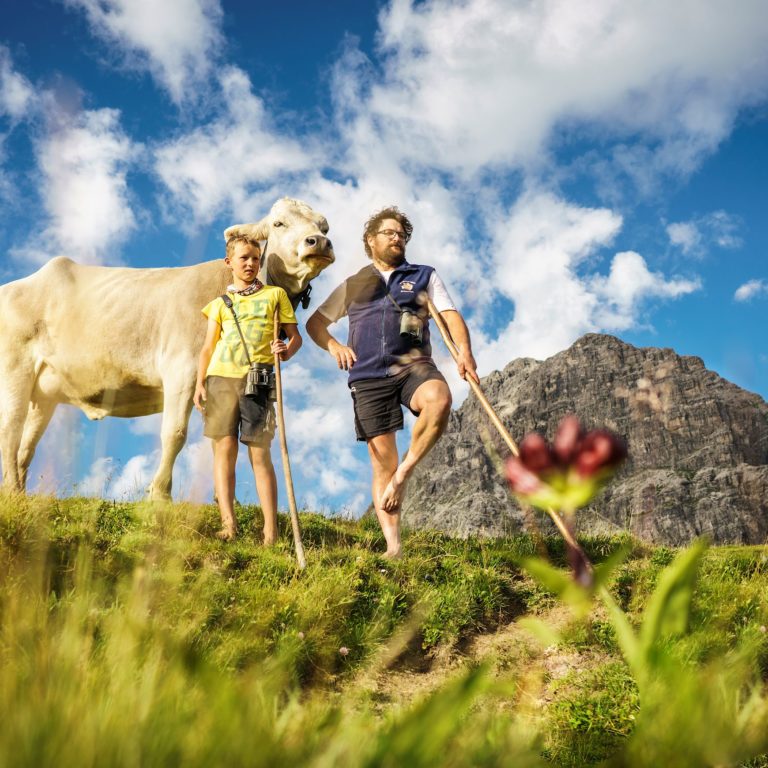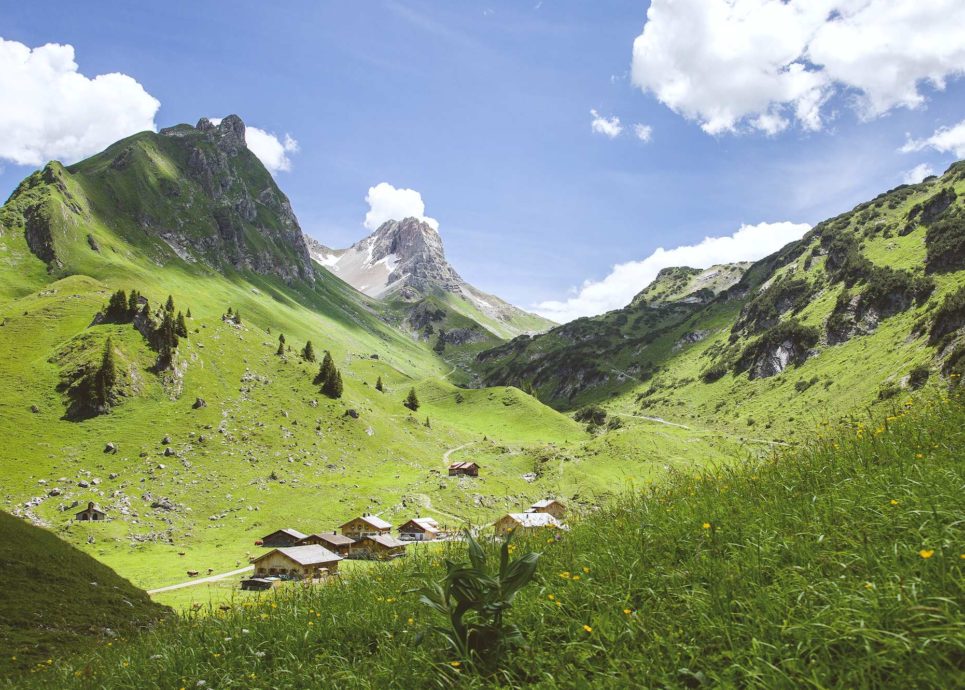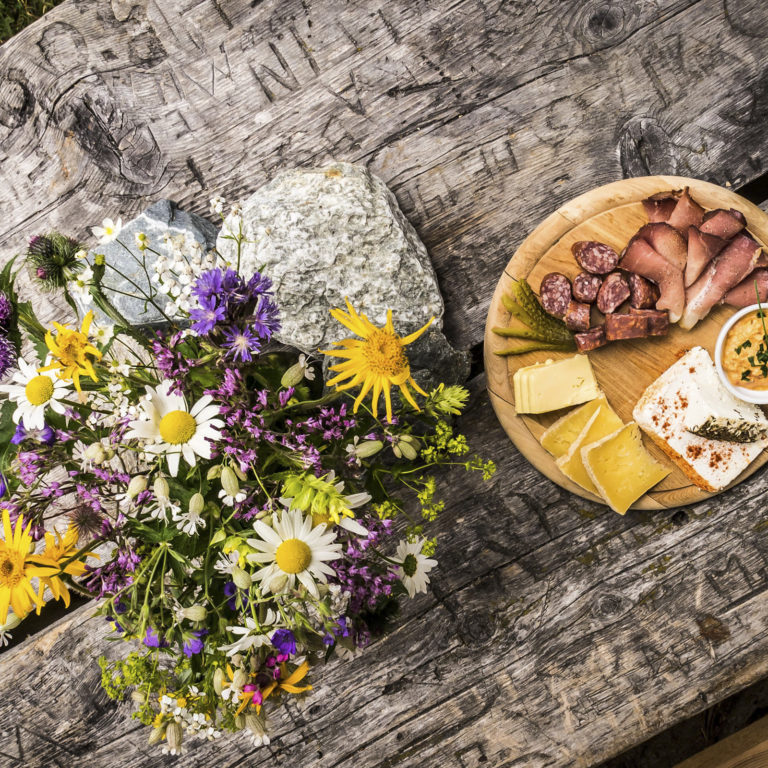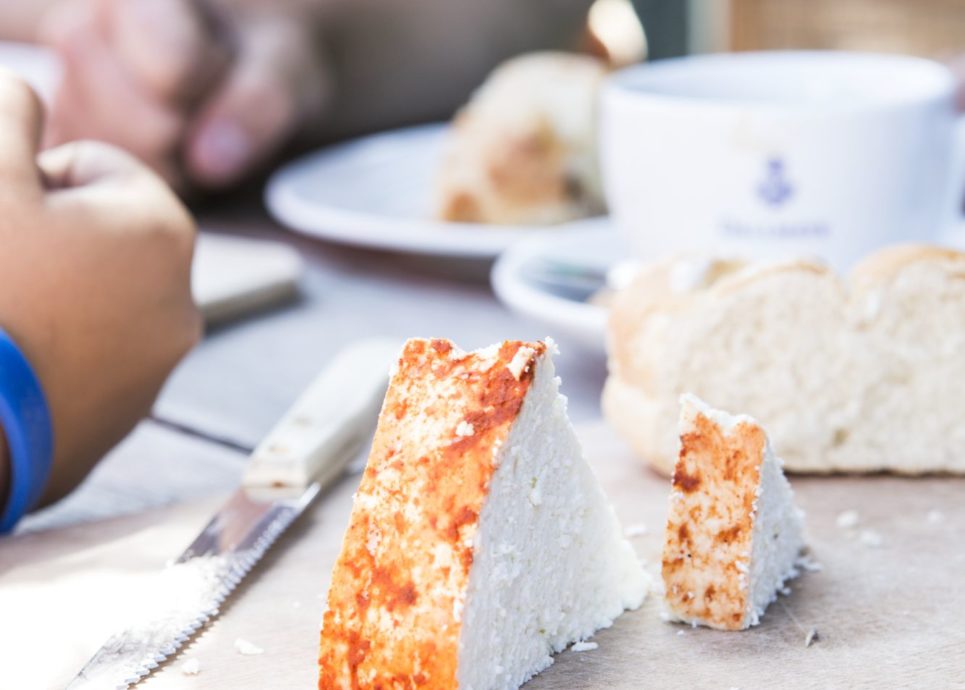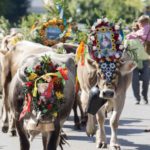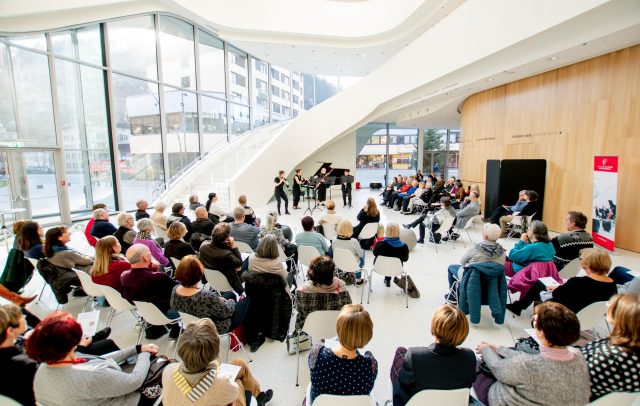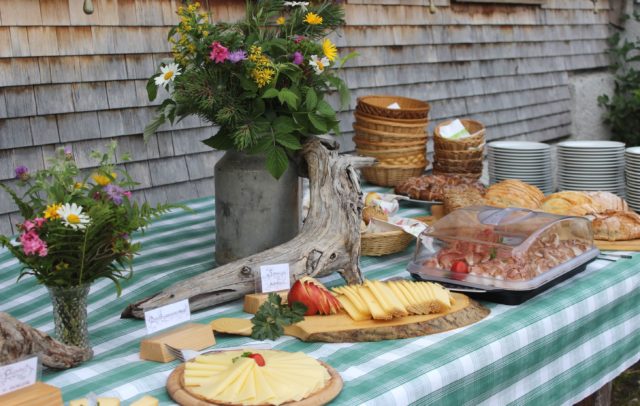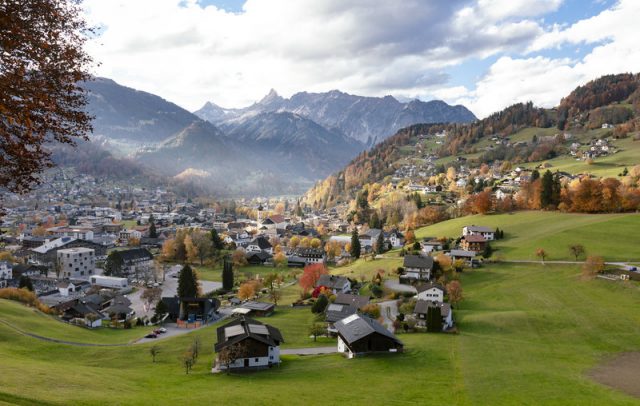Alpine tradition up close
During the "Alpabtrieb" or out on hiking tours, guests can observe a centuries-old craft at close quarters: three-stage agriculture.
Date: 12 September 2017
When people think of Vorarlberg, one of the first images that comes to mind is an expansive mountain landscape, dotted with luscious, green meadows and grazing cows. And not without reason – around 40 percent of the territory is alpine pasture land. On most of these alpine pastures, a traditional form of livestock farming is still practised: three-stage agriculture. This special method of farming dairy cows has even been accepted into the national UNESCO intangible cultural heritage list.
Centuries-old tradition
Cattle spend the winter months in barns; the spring and autumn on pastures of the lower mountain slopes, close to the villages. Then in July, the animals are taken to the higher alpine pastures – and this is what most people have in their mind’s eye when they think of cows in Vorarlberg. The cattle spend the summer months here, grazing on lush meadows in pleasant temperatures. The different food, in the form of grasses and herbs at the respective altitudes, has an effect on the milk and naturally on the flavour of the cheese: You’ll taste the difference immediately if you eat a young “Alpkäse” cheese or the Montafon speciality “Sura Kees” – a ripened sour milk cheese that has been made locally since the 12th century – in one of the numerous alpine dairies. The process of bringing the animals down the mountain to their barns is referred to as the “Alpabtrieb”. Essentially, this procedure has not changed at all in the last 100 years – not simply for tradition’s sake, but because the three-stage agricultural system still works and remains cost-effective.
The Alpabtrieb experience
In many regions, such as Montafon, the Alpabtrieb is celebrated in style as the culmination of the farming year. When man and beast return to the valley in good health, the cattle are adorned colourfully with flowers and bells. The Alpabtrieb takes place in Bartholomäberg on 2 September with a farmer’s market, catering and live music. The residents of St. Gallenkirch, Gargellen and Silbertal also celebrate this event. Tschagguns will mark the Alpabtrieb on 16 September with a Frühschoppen – a convivial, traditional morning get-together with communal eating and drinking, accompanied by a music group, in this case the “Harmoniemusik Tschagguns”. Alongside the descent of cattle and goats into the village centre, another highlight is the arrival of the beautifully decorated Alpe Hora Haflinger horses. You can find all the dates for the Alpabtrieb in Montafon here.
Experience the alpine way of life
You’ll come even closer to the traditional way of life if you join in one of the various walking tours in the Vorarlberg Alps. This year, for example, you still have the opportunity until 26 September to take part in the Faszination Alpleben walk in Kleinwalsertal. David Berktold, a passionate alpine herdsman and operator of the Fluchtalpe mountain lodge, will provide you with insights into his daily working life. You’ll also have the opportunity to sample some of the products made on the mountainside. Alongside the traditional routes, plenty of other alpine hiking trails in Vorarlberg are ideal for autumn walks.

